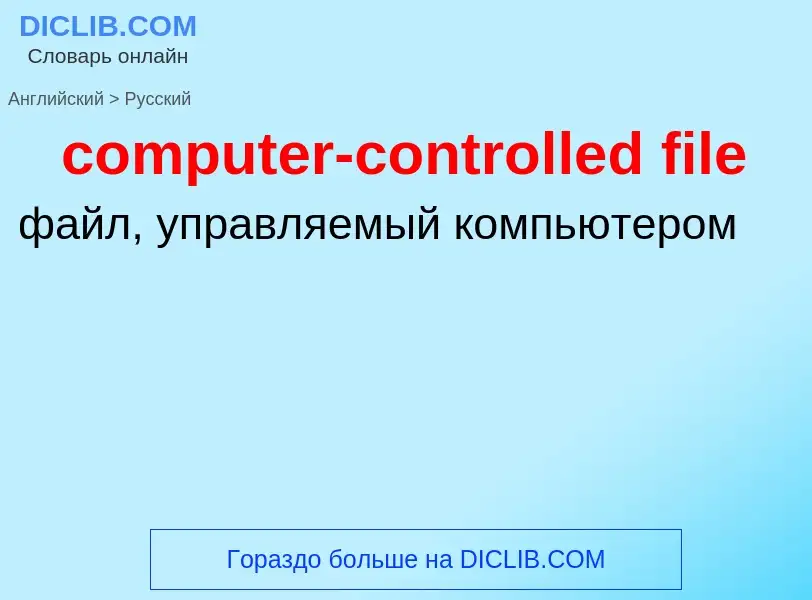Перевод и анализ слов искусственным интеллектом ChatGPT
На этой странице Вы можете получить подробный анализ слова или словосочетания, произведенный с помощью лучшей на сегодняшний день технологии искусственного интеллекта:
- как употребляется слово
- частота употребления
- используется оно чаще в устной или письменной речи
- варианты перевода слова
- примеры употребления (несколько фраз с переводом)
- этимология
computer-controlled file - перевод на русский
общая лексика
формат файла
структура хранения данных в файле. Существует множество стандартных форматов, особенно графических файлов. На формат файла обычно указывает расширение имени файла
общая лексика
тип файла
определяется типом хранящихся в файле данных. К основным типам файлов относятся текстовые, двоичные, графические, файлы баз данных. Указанием на конкретный тип файла служит расширение имени файла
Определение
Википедия

Teletext, or broadcast teletext, is a standard for displaying text and rudimentary graphics on suitably equipped television sets. Teletext sends data in the broadcast signal, hidden in the invisible vertical blanking interval area at the top and bottom of the screen. The teletext decoder in the television buffers this information as a series of "pages", each given a number. The user can display chosen pages using their remote control. In broad terms, it can be considered as Videotex, a system for the delivery of information to a user in a computer-like format, typically displayed on a television or a dumb terminal, but that designation is usually reserved for systems that provide bi-directional communication, such as Prestel or Minitel.
Teletext was created in the United Kingdom in the early 1970s by John Adams, Philips' lead designer for video display units. Public teletext information services were introduced by major broadcasters in the UK, starting with the BBC's Ceefax service in 1974. It offered a range of text-based information, typically including news, weather and TV schedules. Also, paged subtitle (or closed captioning) information was transmitted using the same system. Similar systems were subsequently introduced by other television broadcasters in the UK and mainland Europe in the following years. Meanwhile, the UK's General Post Office introduced the Prestel system using the same display standards but run over telephone lines using bi-directional modems rather than the send-only system used with televisions.
Teletext formed the basis for the World System Teletext standard (CCIR Teletext System B), an extended version of the original system. This standard saw widespread use across Europe starting in the 1980s, with almost all televisions sets including a decoder. Other standards were developed around the world, notably NABTS (CCIR Teletext System C) in the United States, Antiope (CCIR Teletext System A) in France and JTES (CCIR Teletext System D) in Japan, but these were never as popular as their European counterpart and most closed by the early 1990s.
Most European teletext services continued to exist in one form or another until well into the 2000s when the expansion of the Internet precipitated a closure of some of them. However, many European television stations continue to provide teletext services and even make teletext content available via web and dedicated apps.
The recent availability of digital television has led to more advanced systems being provided that perform the same task, such as MHEG-5 in the UK, and Multimedia Home Platform.


